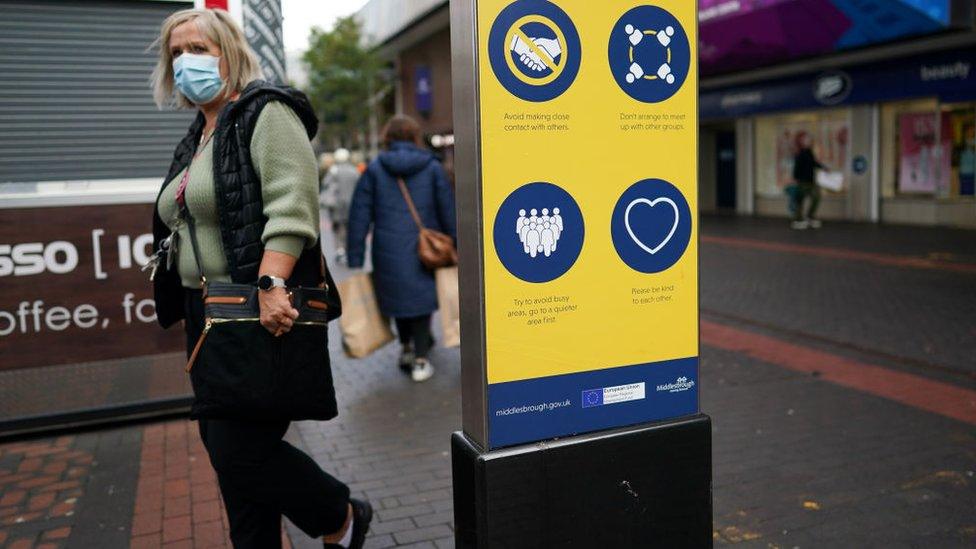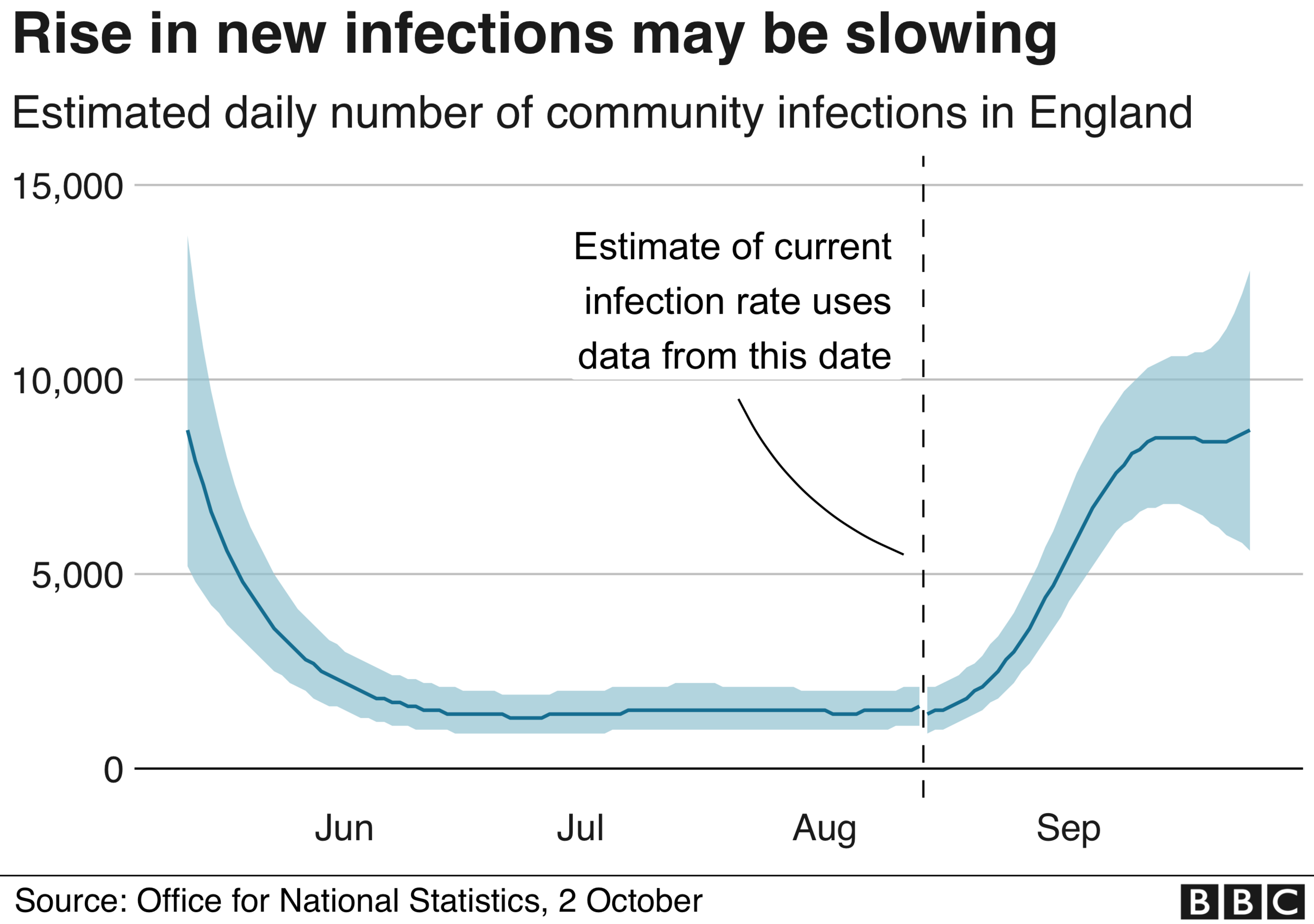Covid: Growth in Covid cases 'may be levelling off'
- Published
- comments

There is more evidence new coronavirus infections may be increasing more slowly than in previous weeks.
Data from three different analyses show a slight change in England and Wales, but government scientific advisers urge caution.
Their latest R number estimate, indicating how fast the epidemic is growing, rose to between 1.3 and 1.6.
Extra restrictions to curb the spread of the virus are in place in many parts of the UK.
Sage, the body which advises the UK government, say it is still "highly likely" the epidemic is growing exponentially across the country.
The R or reproduction number is a measure of how many other people each person with the virus is infecting, so an R between 1.3 and 1.6, external means that on average every 10 people infected will infect between 13 and 16 other people.
In March, before any control measures were put in place, R was thought to be just under three.
On Friday, testing of people with symptoms detected 6,968 new cases of the virus, government figures show, external. This is similar to yesterday and down slightly on previous days, but way below the number at the peak of the pandemic.
An Office for National Statistics (ONS) survey, external estimates there were 8,400 new cases per day in England in the week to 24 September - slightly down on the previous week's estimate of 9,600 daily cases.

This would equate to around one in 500 people now having the virus in England, and also in Wales.
"There is some limited evidence that the incidence rate may be levelling off, following steep increases during August and early September," the ONS says.
Early estimates for Northern Ireland suggest one in 400 people have the virus there.

How fast is the epidemic going?

It's easy to feel lost in the mass of coronavirus data, but overall the story is very simple.
Cases are going up. It's not as bad as March. Things are better than anticipated two weeks ago.
Imagine the epidemic in the UK is a car and we're behind the wheel.
At the start of the year we had our foot to floor and the epidemic was rapidly picking up speed.
Lockdown was like slamming on the brakes. We slowed down, but without coming to a stop as we still had Covid cases.
We continued moving at a fairly steady speed over summer, but in early September we hit the accelerator again and cases started to shoot up.
The semi-positive news is it looks like we've eased off the accelerator a bit. We're still gaining speed, just not as much as feared a few weeks ago.

Scientists behind the Covid Symptoms Study app, external said their data also suggests the number of new Covid cases in the UK has "flattened" in the last four days.
They estimate there were nearly 21,000 new cases per day on average over the two weeks up to 28 September, with numbers highest in the north of England and in people under 30.
Tim Spector, professor of genetic epidemiology at King's College London and founder of the app, said higher numbers of younger people being infected now compared to in spring "may explain why the pressures on the NHS are less".
These two analyses of the spread of the virus mirror the findings of the React Study which found that, although cases are still high, the growth of the virus may be slowing down in England.
It said this could be due to measures like the "rule of six" being introduced.

VACCINE: When will we have one?
IMMUNITY: Can you catch it twice?
LOCAL LOCKDOWNS: What happens if you have one?
QUARANTINE: Who must self-isolate after arriving in the UK

The ONS's estimates of how much of the population is currently infected are based on testing a representative sample of people in households with or without symptoms.
It is different to the number published daily by the Department of Health and Social Care. That records positive cases in people with potential Covid symptoms who request tests.